Birdwatching.com.na


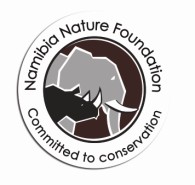
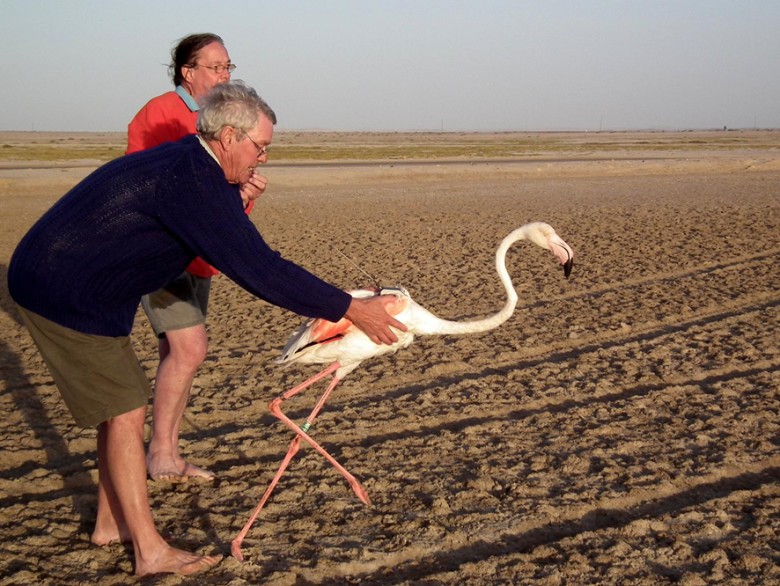
NamPower/Namibia Nature Foundation
Strategic Partnership
Newsletter No. 11: March 2013
IN THIS ISSUE
Editorial: Progress with projects and update of
our action plan . 1
Flamingos tracked by satellite to identify "hotspots"
for conservation action .2
How do wetland birds find ephemeral pans so soon,
after they fill up after rain? .3
Flamingo flight paths: progress with ground tracking .4
NamPower weaver birds project .5
Provisional feedback on our wildlife and power line
incident database .7
Osprey mortality on Namdeb line .8
Other power line incidents/surveys .9
PROGRESS WITH PROJECTS AND UPDATE OF
OUR ACTION PLAN
Mike Scott (front) and Mark Boorman release one of three
flamingos fitted with GPS satel ite tracking devices at Mile 4
This issue brings news of excellent progress with our
Saltworks in January this year (photo Ann Scott).
initiatives! As we near the end of our first funding phase
from the European Investment Bank, the time has come to
with results that are sobering and a spur to further action.
review our progress and sharpen the focus for the next
The weaver birds project has reached an exciting stage,
phase ahead. Our action plan has therefore been
where field trials will bring new insights for addressing the
reassessed and updated (see below).
problems caused to the power supply by their nesting.
Exciting news is that we have managed to fit GPS satellite
We would like to thank the European Investment Bank for
trackers to three flamingos, and hopefully this will enable
the generous funding that has enabled us to make this
us to determine their flight paths more accurately, in
progress, and all our collaborators and supporters for their
collaboration with an important ground tracking project.
ongoing contributions. The challenges ahead are great but
The bustard and power line project gathers momentum,
we have every faith that we can address them together.
Summary of our updated action plan:
4. Promote awareness, information-sharing,
education, outreach, collaboration
1. Conduct power line surveys/monitoring
4.1 Produce newsletters
1.1 Continue with power line surveys/ monitoring
4.2 Produce a booklet and poster on wildlife/bird and
1.2 Enter/process data
power line interactions
1.3 Analyse data; make recommendations, provide
4.3 Disseminate information and material to
identified target groups
2. Implement effective mitigation
4.4 Encourage further communication and
2.1 Implement environmental checklist
information sharing with local partners
2.2 Conduct focal mitigation trials
4.5 Encourage further communication and
2.3 Review mitigation situation
information sharing with international partners
2.4 Address potential impacts of wind energy
5. Further develop & promote sustainability of the EIS
5.1 Increase information on the EIS
3. Conduct focal research projects
5.2 Refine existing atlases
3.1 Sociable Weaver and Red-billed Buffalo-Weaver
5.3 Incorporate new atlases
5.4 Develop Environmental Assessment component
3.2 Bustard and power lines project
5.5 Establish a "mark and resighting" platform
3.3 Flamingo tracking project
5.6 Set up a "help desk" for the EIS
5.7 Promote the outreach programme and building
sustainability of the EIS
The NamPower/Namibia Nature Foundation Strategic Partnership is funded by the European Investment Bank
Project management & newsletter: Mike & Ann Scott
Tel. 063 683 026, Fax 088 616 031, Cell 081 284 5130, Email ecoserve@i way.na / enviro.inform@gmail.com
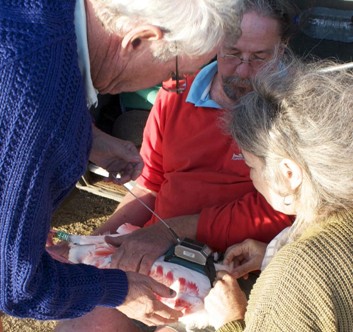
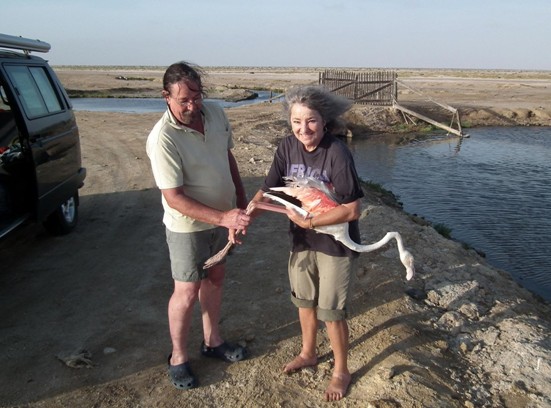
FLAMINGOS TRACKED BY SATELLITE TO
sense, to the benefit of all inter-dependent wetland
IDENTIFY "HOTSPOTS" FOR CONSERVATION
species, habitats and their human communities.
The first adult Greater Flamingo was captured on 9 January 2013 at the Mile 4 Saltworks near Swakopmund and fitted with a battery-powered GPS Platform Terminal Transmitter (PTT). A second adult was fitted with a solar-powered GPS PTT on 11 January, and an adult Lesser Flamingo with the same type of device on 17 January. Transmitters of different designs, with different duty cycles, are being tested for optimum efficiency. The birds were ringed with a green plastic band with a unique code (i.e. NFX, NFF and NFZ). Subsequent re-sightings of the birds in the area showed that they were in good health. The devices are now transmitting signals with detailed information that is picked up by satellite and relayed by Collecte Localisation Satellites (CLS/Argos) in France, and downloaded regularly on the internet. The latest GPS positions indicate that the birds are still on the salt pans at
Mark Boorman (left) and Ann Scott with a Greater Flamingo
Mile 4 Saltworks. Although some flamingos have already
captured at Mile 4 Saltworks on 9 January 2013
migrated inland during the rainy season, possibly to breed
(photo Mike Scott).
(see p4 & 5), many of these birds are not showing signs of
Ann & Mike Scott (ema
moving as yet; they may well move only after the next
Three flamingos were successfully fitted with sophisti-
good rains (i.e. towards the end of the year). When they
cated GPS satellite tracking devices at Mile 4 Saltworks,
do move, we hope that the flight paths that emerge will
Swakopmund in January 2013. This milestone initiative is a
indicate focal areas for addressing potential interactions
key component of an innovative project to track the flight
between flamingos and overhead lines.
paths of flagship wetland bird species in order to address
The project funders and partners, the many supporters
major conservation issues (also see page 1, and the
and especially the flamingo capture team are all thanked
November 2012 issue of this newsletter).
for their invaluable contributions – in particular Mark
Large, charismatic birds such as flamingos and cranes are
Boorman for his expertise in capturing the birds and, with
universally regarded as flagships for the conservation of
Hartmut Kolb, Sue Roux and Timo Britze, for assistance in
wetland habitats. Unfortunately, these species cannot be
the field; and Wilferd Versfeld for his advice. The Klein
confined to protected areas. Nomadic migratory species
family is thanked for providing access to Mile 4 Saltworks,
often encounter threats in unprotected areas, including
and John Mendelsohn for his ongoing assistance with
collisions with overhead lines or snaring/hunting. As an aid
tracking the birds.Further information is available on the
to mitigating these problems, there is a need to determine
Partnership and EIS websites and
the flight paths of such species so that potentially
problematic areas can be identified and targetted for further conservation action. The "Flight Paths for Wetland Flagships" Project was initiated in 2012 by the NamPower/NNF Strategic Partnership, in cooperation with the Namibia Crane and Wetlands Working Group. The project is funded by the Environmental Investment Fund (EIF) of Namibia, the Nedbank Go Green Fund and the above Partnership. Other collaborators include the Ministry of Environment and Tourism and many other organisations and individual supporters, both local and international. The project seeks to accomplish its aims by tracking the flight paths of Greater Flamingo and Lesser Flamingo, and Blue Crane – all on the Red List; monitoring their numbers (and breeding success); investigating the mitigation of power lines on documented flamingo flight paths; and publicising the results to promote awareness of the plight of such flagship species. In so doing, the results will have a
Mike Scott (left), Mark Boorman (centre) and Ann Scott fitting a
ripple effect on environmental conservation in a broader
solar-powered satel ite tracking device to a Greater Flamingo
(photo Hartmut Kolb).
NamPower/Namibia Nature Foundation Strategic Partnership Newsletter No. 11: March 2013
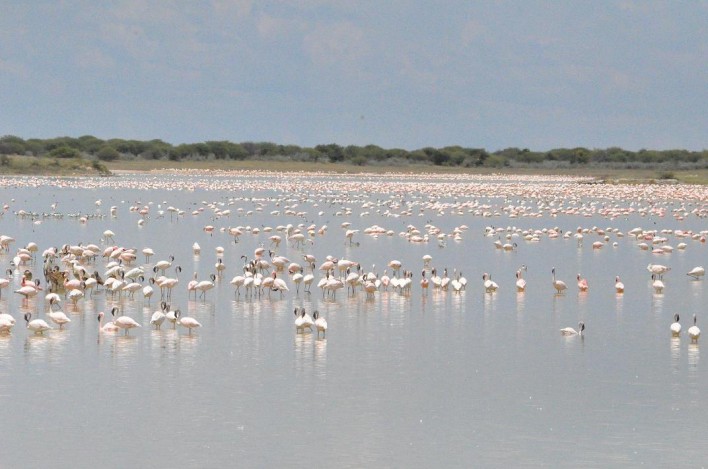
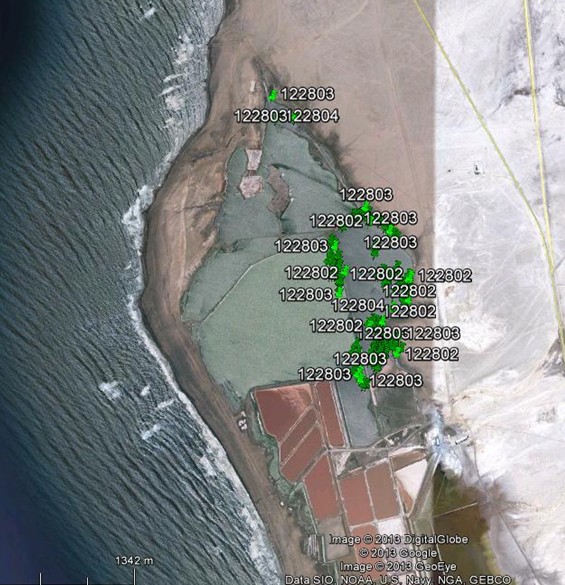
HOW DO WETLAND BIRDS FIND EPHEMERAL
PANS SO SOON, AFTER THEY FILL UP AFTER
RAIN?
Robert Simmons, Phoebe Barnard & Ian Jamieson (email
Rob.Simmons@uct.ac.za)
ABSTRACT of an article published in 1998 (Ostrich 70(2):
145-148): What precipitates influxes of wetland birds to
ephemeral pans in arid landscapes? Observations from
Namibia.
The ability of wetland birds to rapidly find and exploit
ephemeral pans is well know in arid lands, but the
episodic nature of such events means that the methods
employed are poorly understood. Birds may: (i) wander
randomly until wetlands are found; (ii) predict rainfronts
and rainfall using changes in pressure gradients as cues; or
(iii) follow rainfronts directly and descend onto pans as
they fill.
Observations from isolated pans in Namibia during the
first rains indicate that wetland birds follow rainfronts and
descend onto pans as they fill. In one 30 ha pan, 37 birds
of five species had arrived one day after filling and in
another 50 ha pan over 300 birds of 13 species were
attracted within three days of filling, Wetland birds, like
migratory raptors, therefore, follow rainfronts, and may
wander locally thereafter. How species such as grebes and
flamingos that exploit these pans for later breeding and
intercontinental movements (respectively) time their
flights to coincide with fully flooded pans remains
unknown.
Above: Greater Flamingo (front left) fitted with a battery-
powered satellite tracking device (photo Mark Boorman).
Below: Example of data obtained for three flamingos fitted with
satellite tracking devices, showing their positions at Mile 4
Saltworks, Swakopmund (based on a Google map compiled by
John Mendelsohn: Raison).
A huge influx of flamingos – mainly Lesser Flamingo – was
reported by Wilferd Versfeld at Fischer's Pan in Etosha
National Park on 31 January 2013. The estimated number is
50,000 – they must have started to arrive the previous week as
staff had reported hearing them fly over at night at the time.
About three weeks earlier one could see masses of pink birds
on the main pan itself, but as the water receded with the lack
of rain, the flamingos all moved to Fischer's Pan
NamPower/NNF Strategic Partnership
(photo Wilferd Versfeld).
NamPower/Namibia Nature Foundation Strategic Partnership Newsletter No. 11: March 2013
FLAMINGO FLIGHT PATHS –PROGRESS WITH
GROUND TRACKING
Theresa Henschel
(email flamingo.flightpath.namibia@gmail.com)
Introduction
In the period June to December 2012, the first records
were collected on flamingo flight paths, as reported here.
The aim was to report the presence of flamingos at
locations between the main wetlands.
Methods
Reports of sightings were solicited and received via the
A flock of around 300 flamingos reported flying over Henties
Bay on 10 February 2013 (photo Ronel Maritz)
Email: flamingo.flighpath.Namibia@gmail.com
Telephone: 081-8551456
Brandberg White Lady Lodge confirmed that guests had heard flamingos flying over on Sunday,
15 July 2012 at 02:00. A Henties Bay resident
Estelle Rubow (Henties Bay Municipality)
responded that she heard them between 04:00
on the Afrikaans radio on Friday, 20 July
and 06:00 on that same day
A stranded young flamingo was found on Farm
Annemarie Brell on the German radio –
Okamahapu in Hochfeld on Friday, 20 July 2012.
mentioned several times
The owners didn't hear any flamingos during the
Joh Henschel on German radio - Tuesday,
night and were surprised to see a single, very
exhausted flamingo early in the morning. They
Newpaper and magazine articles.
were not aware of any flamingos ever flying over
Namib Times on Tuesday, 24 July 2012
during previous years.
Allgemeine Zeitung on Monday, 30 July
A MET warden in Windhoek reported that he had
seen flamingos in the Von Bach Dam some years ago.
Flamingo (inflight magazine) for the
September 2012 issue
In news articles the following reports were read:
Circulars to members of different organisations
Sossusvlei – 11 September 2012 - one flamingo
Namibian Farmers Unions
Fenata (Tourism Association)
Aus, 16 August 2012 – one flamingo stranded
Municipalities (through Estelle Rubow)
MET offices in Khorixas, Uis, Outjo, Cape
Personal observations at Walvis Bay indicate the arrival of
Cross, and Windhoek
large numbers of Greater Flamingos at the end of June
and early July 2012. On 5 and 6 January 2013, flocks of several hundred flamingos were seen flying up ever higher
and heading inland.
Reports received
Discussion
The following reports of flying flamingos were received:
The above sightings are valuable records, but do not yet
Sightings near Mile 108 during the second week of
suffice to indicate favoured flight paths from the interior
to the coast. None of the reports included estimates or
Sightings in Henties Bay on Sunday, 22 July 2012
counts of numbers or of flight heights.
between 02:00 & 03:30
Sightings in Henties Bay on Monday, 23 July 2012
Future plans
between 02:00 & 06:00
An alert will be sent to previous contacts and further
Sightings in Uis on Tuesday, 24 July 2012 at 01:00
persons and via the media for people to be on the lookout for flamingos flying from the coast to the interior in
Uis Rest Camp confirmed that they have seen
January/February. This information will be collated and
flamingos in their area – but did not supply
mapped together with the previous records after the end
further details on when, etc.
of the current migration.
NamPower/Namibia Nature Foundation Strategic Partnership Newsletter No. 11: March 2013
NAMPOWER WEAVER BIRDS PROJECT
The following possible mitigation methods problems
Julia Amukwa [amukwajulia@yahoo.com]
caused by weaver nesting were identified and reviewed,
with a brief explanation of why the methods were chosen:
1. Dummy snakes
One of the actions identified in the Partnership's Bird and Power Line Action Plan is to initiate research into
No other enemy of the Sociable Weaver was found more
interactions between Sociable Weavers and Red-billed
influential in the birds' nesting behaviours than snakes.
Buffalo-Weavers on power lines, with a view to addressing
The study therefore assumes that any other scare device
the negative impacts of nesting on the power supply by
(such as scarecrows) will be less effective compared to
developing/testing appropriate mitigation methods (see
issue No, 7 and 9 of this newsletter). NamPower bursary
2. Artificial trees and fake poles/pylons
student Julia Amukwa reports on progress on this
One of the crucial factors in nest construction is the ability
important project in 2012.
of the structure to support the nest. Therefore providing
alternative support structures, such as artificial trees or
fake poles, may reduce nesting on electrical poles and
TABLE 1: Project milestones.
Milestones
Literature review
Identify different mitigation options
Field test the identified methods
Data collection and monitor bird behaviour
Data analysis and write Master thesis
Give recommendations
TABLE 2: Feasible combinations of mitigation measures.
snakes Artificial
trees Fake poles/
pylons Relocation of
nests Anti-nesting
devices Reflective features or
laser beams Invisible fog/
or jells Ultrasonic
NamPower/Namibia Nature Foundation Strategic Partnership Newsletter No. 11: March 2013
3. Relocation of nests
In this case nests are moved away from distribution wires
where they may pose a threat to power distribution, to
the less sensitive parts of the poles/pylons. Relocation
may also be from power lines to other support structures
available/provided.
4. Anti-nesting devices
A Spanish electricity distribution company, Red Electrica,
and a French company, Electricité de France (EDF) tested
seven different anti-nesting devices on "cat-head"-type
pylons. Some proved to be best as anti-nesting devices
(such as the T-shaped, crossed and parallel designs).
5. Reflective features or laser beam technology
Reflective features include any device with an intense
sunlight reflective surface (a nuisance to the birds) that is
Sociable Weavers are cooperative breeders that produce
small enough to be fitted on and/or around electrical
huge, communal nests. Their nesting on power line structures
structures as anti-perching devices. These can be made at
may cause disruptions in the power supply, and finding
home or from recycled materials and are probably the
suitable mitigation measures has been identified as a priority
by the NamPower/NNF Strategic Partnership
cheapest option. Good examples would be CDs, cans and
(photo AC van Zyl)
6. Bird control chemicals
To discover the most efficient and cost effective mitigation
The study identified four chemicals that can be possibly
method(s) for bird nests on Namibian power lines
used to rid birds from poles and substations. These are 4-nitropyridine-N-oxide (Avitrol 100) or 4-aminopyridine
Main objectives
(Avitrol 200), Methiocarb, Fenthion and Methyl anthra-
Test mitigation methods in different
nilate (MA). Although some of the above chemicals were
environments and different seasons of the year
proved to be naturally occuring and/or non-toxic, all
Estimate costs involved in the implementation
chemicals should be used with caution.
and maintenance of each method
7. Other measures (least recommended)
Basic procedures:
Bird deterrent fog/haze devices
1. Locate power lines with weaver nests
2. Remove the nest and apply mitigation method
Sticky gums or jells
3. Observe whether the birds build back on nest or not
Ultrasonic devices
Final remarks
So far the study has found that no particular method is
Field data sheets have been designed for the Bird nests
verified to be ultimately best. Therefore sound, visual, and
and power lines in Namibia project, which any
tactile products will be combined to enhance each other's
stakeholder or the general public can fill in for their areas
effectiveness since several senses of the bird are triggered
or wherever they are travelling. The aim is to develop a
at once (see Table 2 above for method combination).
progressive database that will aid in understanding power
line nesting better. There are two forms and a guide on
2013 Brief plan
how to fill them in. Please contact Julia for copies of the
Study areas: Aranos and Rehoboth, Namibia
forms or any enquiries
Birds that cause power supply problems through nesting on structures: Sociable Weaver/Versamelvoël (left) and
Red-bil ed Buffalo-Weaver/Buffelwewer (right) (photos Chris van Rooyen, atlas maps Alice Jarvis)
NamPower/Namibia Nature Foundation Strategic Partnership Newsletter No. 11: March 2013
PROVISIONAL FEEDBACK ON OUR WILDLIFE
AND POWER LINE INCIDENT DATABASE
To date just over 200 wildlife/power line incidents have
been entered on our database. A provisional assessment
(see Tables below) indicates that the group most impacted
is the bustards (50%), followed by flamingos (20%) and
raptors/birds of prey (17%). Amongst the mammals (8%),
mainly genets are involved, as well as two giraffes. In
terms of power line structures, many of the incidents have
been recorded on double lines (e.g. steel pylons running
parallel to wooden poles), as well as on single structures;
this analysis is still in progress. Note that these records do
not yet include the results of John Pallet's power line
surveys (see previous issues of this newsletter).
Large raptors such as this magnificent pair of
A big thank you to all those who have contributed so many
Verreauxs'/Black Eagles are at risk from power line
valuable records, which serve to guide our actions!
interactions (photo Susann Kinghorn)
Summary by group (n = 203)
Bustards and korhaans Flamingos
Other birds
No. of individuals involved by structure
(provisional data)
NamPower/Namibia Nature Foundation Strategic Partnership Newsletter No. 11: March 2013
OSPREY MORTALITY ON NAMDEB POWER
LINE
Jefta Ampueja, Wilfried Doedens and Pankratius Kondjamba
(Namdeb: email Jefta.Ampueja@namdeb.com)
Namdeb operations are supplied with a 66kv power line
via a cross-border supply from ESKOM in South Africa,
which is stepped down to 30kV and further to 6.6kV for
mining operations. The "x-mas tree" power line configura-
tion was used for 30kV and 66kV lines in the late 1990s
and early 2000s but is now discontinued due to regular
faults caused by birds flying into these types of lines.
However, there are still two of these lines (operational)
left in the Southern Coastal Mining (SCM) area.
The NamPower/NNF Strategic Partnership has launched a
nation-wide campaign on wildlife interactions with power
lines and has been educating and doing many awareness
campaigns. It has targeted areas such as the Orange River
Mouth for its unique birdlife and potential impacts on
several threatened bird species.
The White Pelican Pelecanus onocrotalus, the Greater
Glamingo Phoenicopterus ruber and the Lesser Flamingo
Poenicopterus minor are all present in large numbers.
These species are large, heavy and not very agile flyers.
They are also Red Data species and particularly vulnerable
to collisions with power lines. According to the latest
information available, flamingo numbers have declined by
40% in the last 15 years due to breeding failure (with only
three major breeding events in 40 years). They had never
bred successfully in South Africa (Williams 1986) until an
artificial breeding island was constructed at Kamfers Dam
near Kimberley. Lesser and Greater Flamingos are
classified as Vulnerable in the Namibian Red Data Book
(Namibia holds 93% of the southern African population of
Lesser Flamingos and 84% of the Greater Flamingo
population). Flamingos often migrate at night, which
further increases their vulnerability to colliding with
power lines.
On 7 December 2012 an electrician, Wilfried Doedens was
responding to a power black-out incident along the 30kV
power line to the Namdeb waste management area, when
he came across its cause: a dead bird. Upon first view, he
immediately assumed it was a falcon, due its raptor-like
features. He was also intrigued by this specific bird and
immediately took cognisance of the unusual ring on one of
its legs. He contacted the environmental office and
reported this rather unique find.
Wilfried took the area GPS coordinates of the incident
(S28° 28" 06; E016° 18" 29) and took pictures of the bird.
We contacted Mike and Ann Scott, our bird enthusiasts and experts, working with the NAMPOWER/NNF project.
The bird had burn marks, indicating an electrocution; this
cause of mortality was probable, if it had perched on a
pole of the x-mas tree configuration, given that the conductors are close to one another. However, as the bird
Above (a and b): Juvenile Osprey at the power line impact site
was found midspan, rather than close to the pole, it is
Below: The Namdeb power line structures: 30kV "x-mas tree"
possible that collision was also involved.
configuration to waste management; in the background the
66kV line from ESKOM to the Namdeb substation.
NamPower/Namibia Nature Foundation Strategic Partnership Newsletter No. 11: March 2013
The ring had a unique number on it, M-63002 (see photo
below). This number had NAMDEB becoming part of the end of a bird ringing project initiated in Finland, Sweden. The finding on the ID and origin of the ringed bird some time later was very interesting. It came out that the electrocuted bird was a juvenile Osprey (Visvalk), a large raptor that was ringed as a chick in Finland (at 6127N 2404E) on 9 July 2012 – so it was about five months old, probably on its first migratory flight to the Southern Hemisphere. It had covered a distance of 10,022 km in 51 days! It was also Namibia's first record of an Osprey as a power line mortality, and also its first record of a ringed bird being involved in such an incident. According to one of our local birding experts, Mark Boorman, there have not been many ring resightings or recoveries (i.e. of dead birds) of this species on the West Coast of Africa, as you will see from looking at its distribution map
Trekkopje-Wlotzka 132 kV
15 March 2013
Near Desalination plant22.371737S 14.452708E
(approx.)
Lesser Flamingo (fresh) – collision; this Red-listed
species is VULNERABLE in Namibia, and also
GLOBALLY THREATENED
Reported by: Markus Pfaffenthaler
OTHER POWER LINE INCIDENTS/SURVEYS
Telephone pole
19 December 2012
Maltahöhe D1088, 8.8 km before turnoff to B2
Guineafowl caught in tree beneath telephone pole
Reported by: Sue Roux
Trekkopje-Wlotzka including Trekkopje Bypass
Survey team: Kaarina Nkandi, Helmut Ochurub,
Trekkopje-Wlotzka 132 kV
13 February 2013
Start & end: 68.5 km, walking 5 spans
Near Desalination plant (22 22 20.24 14 26 37.29)
4 February 2013: No incidents
Black-necked Grebe (fresh) – collision; this Red-listed
19-20 March 2013 : No incidents
species is NEAR-THREATENED in Namibia Reported by: Helmut Ochurub and Richard Gurirab
NamPower/Namibia Nature Foundation Strategic Partnership Newsletter No. 11: March 2013
Source: http://birdwatching.com.na/wp-content/uploads/pdf/newsletters/2013/np-nnf-newsletter-no11-mar-2013.pdf
Casulari et al. Diabetology & Metabolic Syndrome (2015) 7:65 DIABETOLOGY & Effects of caloric restriction and low glycemicindex diets associated with metformin on glucosemetabolism and cortisol response in overweight/obese subjects: a case series study Luiz Augusto Casulari1,5*, Donatella Dondi2, Fabio Celotti2, Fábio Vinicius Pires da Silva3,Caio Eduardo Gonçalves Reis3 and Teresa Helena Macedo da Costa4
CURRICULUM VITAE (aktualisiert 20.05.2012) Name Berufliche Qualifikation Facharzt für Psychiatrie und Psychotherapie FMH FMH Schwerpunkt Konsiliar- und Liaisonpsychiatrie Facharzt für Innere Medizin FMH Fähigkeitsausweis für Psychosomatische und Psychosoziale Fähigkeitsausweis für Delegierte Psychotherapie FMPP Leiter FMH-Weiterbildungsstätte Psychiatrie und Psychotherapie,









